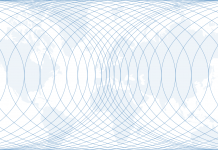It is time to reconsider the past and assess a forecast for the future. The forecasts we make concern the geopolitical system. They are focused on nations. Our forecast that there would be a Russian attack westward has been fulfilled. Our forecast of a period of extreme tension and economic problems in the United States is in the process of being fulfilled. Poland has emerged a significant, though not yet great, power. We have thus far been wrong on Turkey’s emergence but not on Japan’s emergence, and the demographic crisis has happened. There were more forecasts scattered throughout our work, and I am reasonably pleased. We will issue a complete report on that, but right now I want to start on the next forecast, and that means looking back at my first book.
Last week, I wrote an article reflecting on our past. The heart of this article was that we are not a news organization but an intelligence organization. The job of an intelligence organization is not, in my mind, to steal deep secrets but to understand the meaning of what is right in front of you and predict what will come. It is now time to start forecasting the deep future, from roughly the middle of this century to the end. My first major forecast was published in 1996 and written over the prior five years. The forecasts are still operational today, so my ambition is not absurd but merely doubtful. I craft forecasts by writing books. Books give me space to think broadly and time to think about what is going on. What emerges takes little space, a line on what is coming. But it is my books, of which there are five that are the worktable of forecasting, that Geopolitical Futures uses to explain what is happening.
The first step in forecasting is to look at past forecasts and evaluate and criticize them. I will therefore begin a consideration of the future by rereading my books.
I would like to share this process with our subscribers, to give myself another set of critics and to give you a sense of the method I use. I will also lay out the method as I see it for doing this.
The five books contain core forecasts. Each week I will extract and evaluate what I believe are the most important forecasts from one book and share those with you. After about five weeks we will summarize these forecasts, and then spend a couple of weeks talking about our method and how to adjust it – sometimes in emails, sometimes in ClubGPF discussions.
Then, approximately two months after beginning this process, we will turn to forecasting the future. Again. Feel free to hit the delete button if this is not of interest to you. But I’d enjoy your company on this ride if you care to join me. Obviously, I will continue to do my day job: analyzing geopolitics. But it is time to key in on our vital job, which is developing geopolitical futures.
“The Future of War” was the book that began my forecasting process, although I didn’t know it at that time. “The Future of War” was published in 1996, but we started writing it in 1992. It is the book I am proudest of, both as my firstborn and as the work responsible for my most cherished professional moment.
“The Future of War” pivoted on two events. One was the collapse of the Soviet Union. The other was Operation Desert Storm. The geopolitical conclusion I drew was that “The 21st century is the American century.”
Many at the time made the argument that the fall of the Soviet Union would dramatically reduce hostile competition among nations, so my view was seen by many as primitive thinking. Most important, I both dismissed the idea that the Soviet Union’s fall meant an era of peace and affirmed that the U.S. would dominate the world. It was one or the other.
I think this first forecast was accurate, but the problem is that so much was left out. For example, there is nothing about economics or other parts of geopolitics that emerged in my work over the coming years. My focus in this first book was on forecasting war. The book contains various forecasts on the use of weapons in the future with many technical details. It was also my first hint that I might have a future in this racket. In response to this book, I received two reviews, featured on the cover:
“Revolution in modern warfare is upon us. George and Meredith Friedman have provided us an important insight into many of the critical elements of that revolution and their possible implications. There are no answers, but there is one certainty. It is in America’s national interest to have the debate about where technology is taking us and to then resolutely put policies, doctrine, and budgets in place to protect our country. This book is an important element in that debate. I strongly recommend it.” – Adm. Bill Owens, Ret. Vice Chairman of the Joint Chiefs of Staff
And
“We will be hearing a great deal more about this book as time goes on. It is one of those rare watershed documents in a class with the works of Guilio Douhet, B.H. Liddell Hart and Herman Kahn. It is a benchmark piece of work. Competitors and critics alike will find themselves obliged to deal with it one way or another.” – Maj. Gen. Edward B. Atkeson, Army Magazine
I know that it’s bad manners to brag and I try not to. In remembering and writing about “The Future of War,” I was compelled to sin. Forgive me. But my real interest was how the wars I foresaw would reshape geopolitics. And that was a different place to be.






 Special Collection – The Middle East
Special Collection – The Middle East